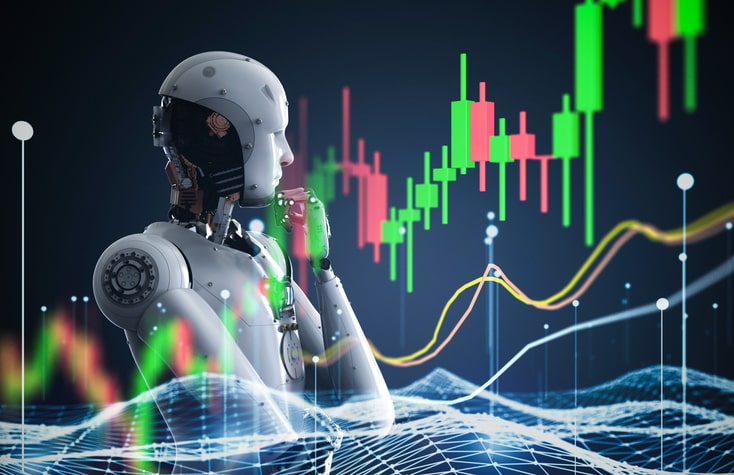Picture this: A multinational corporation discovers a $3.2 million discrepancy in its financial records. Traditionally, a team of forensic accountants would spend weeks painstakingly combing through thousands of transactions, searching for the elusive source of the loss. Instead, an AI-powered system identifies the fraudulent pattern within hours, pinpointing exactly where and how the money disappeared.
This isn’t science fiction. It’s the new reality of AI forensic accounting.
Financial investigation has entered a revolutionary phase. Artificial intelligence is transforming how we detect fraud, analyze financial data, and conduct forensic examinations. The marriage of forensic accounting expertise with AI capabilities is creating unprecedented efficiency and accuracy in uncovering financial misconduct.
For professionals in accounting, finance, and compliance, understanding this technological evolution isn’t just beneficial, it’s essential. The landscape of financial investigation is changing rapidly, and those who adapt will gain significant advantages in protecting assets and ensuring financial integrity.
In this comprehensive guide, we’ll look at how AI is reshaping forensic accounting, from sophisticated pattern recognition to real-time fraud detection systems. We’ll examine practical applications, benefits, challenges, and best practices to help you manage this tech transformation confidently.

What Is AI And Why Does It Matter?
Artificial intelligence (AI) refers to machines programmed to mimic human cognitive functions; learning, problem-solving, pattern recognition, and decision-making. In forensic accounting, these capabilities translate into powerful tools that can analyze massive amounts of financial data with speed and precision that humans simply cannot match.
The significance of AI in financial investigations cannot be overstated. Traditional forensic accounting methods, while effective, are often time-consuming and resource-intensive. AI transforms this process, enabling faster identification of anomalies, more thorough analysis of complex financial systems, and earlier detection of potential fraud.
Types of AI Based on Capabilities
AI systems in forensic accounting vary in sophistication and application, falling into distinct categories:
- Narrow AI (Weak AI): These systems excel at specific, well-defined tasks. Most current AI forensic accounting tools fall into this category, focusing on functions like anomaly detection or document review.
- General AI (Strong AI): This represents systems with human-like intelligence across a broad range of tasks. While still largely theoretical in practical financial applications, general AI could one day comprehend financial contexts, legal implications, and human behavior patterns simultaneously.
- Super AI: Purely hypothetical at this stage, super AI would surpass human capabilities in all aspects of financial investigation, including intuitive understanding of human psychology and predictive modeling of future fraud schemes.
Classification Based on Functionalities
Within forensic accounting, AI systems can also be categorized by how they function:
- Reactive Machines: Basic systems that respond to inputs without memory of past interactions. In forensic accounting, they might identify specific transaction patterns matching known fraud indicators.
- Limited Memory: Most current forensic accounting AI falls here, systems that learn from historical data to improve performance.
- Theory of Mind: Still in development, these systems would understand the intentions and thought processes behind financial transactions.
- Self-Aware AI: The most advanced theoretical category, where AI would possess consciousness and self-awareness. In forensic accounting, this remains entirely conceptual.
The Evolution Of AI In Financial Analysis
The journey of AI in accounting began with simple rule-based systems for transaction categorization. Today, we’ve progressed to sophisticated machine learning algorithms that can identify subtle patterns across millions of transactions, learn from each investigation, and continuously improve detection capabilities.
This evolution represents a fundamental shift in approach, from reactive investigation after fraud occurs to proactive detection and prevention. Modern AI forensic accounting tools don’t just find evidence of financial misconduct; they can predict where vulnerabilities exist and flag suspicious activities in real-time.
The most advanced systems now incorporate natural language processing (NLP) to analyze communication patterns, network analysis to map relationships between entities, and predictive modeling to identify potential fraud before it fully materializes.
For forensic accountants, this technological progression doesn’t replace expertise, it amplifies it. The most effective approaches combine human judgment with AI capabilities, creating investigation methodologies that are more thorough and effective than either could achieve alone.
Key Applications Of AI In Forensic Accounting
Artificial intelligence is rapidly redefining how forensic accountants approach financial investigations. By automating complex analyses and uncovering patterns invisible to the human eye, AI empowers professionals to detect fraud, assess risk, and monitor transactions with unprecedented speed and accuracy.
1. Data Analysis and Pattern Recognition
The core strength of AI forensic accounting lies in its ability to process and analyze massive financial datasets that would overwhelm human investigators. Modern enterprises generate thousands-sometimes millions-of transactions daily, creating a haystack where fraudulent activities are the proverbial needle.
AI excels in this environment by:
- Simultaneously analyzing multiple data streams (banking records, expense reports, vendor payments, etc.)
- Identifying statistical anomalies that deviate from established patterns
- Recognizing relationships between seemingly unrelated transactions
- Flagging unusual timing, amounts, or frequencies that might indicate fraud
A forensic accountant using QuickBooks might take days to spot irregular payment patterns across different accounts. AI systems can continuously monitor all transactions, immediately highlighting suspicious activities like round-number payments, transactions just below authorization thresholds, or unusual transaction timing.
These capabilities dramatically reduce investigation time while increasing detection rates. What previously required weeks of manual review can now be accomplished in hours or even minutes.
2. Natural Language Processing (GenAI) for Document Review
Financial investigations often involve mountains of documents; emails, memos, contracts, financial statements, and more. Reviewing these documents manually is extraordinarily time-consuming and prone to human error. This is where natural language processing (NLP) shines in AI forensic accounting.
NLP enables AI systems to:
- Rapidly process thousands of documents, emails, and communications
- Identify potentially fraudulent language or suspicious communication patterns
- Extract key information from unstructured data sources
- Flag communications containing language associated with fraud or misconduct
Beyond simple keyword searching, advanced NLP systems can detect sentiment and context. They can identify when financial discussions take on a secretive tone or when language suggests pressure or coercion. These distinct insights often provide critical leads in complex financial investigations.
For legal teams working with forensic accountants, this capability dramatically streamlines the discovery process in litigation. Documents that would require weeks of attorney review can be pre-screened and prioritized, focusing human attention where it’s most valuable.
3. Risk Assessment and Identification
AI excels at risk assessment in financial environments by:
- Automatically categorizing transactions based on risk profiles
- Creating risk scores for entities, accounts, or transaction types
- Prioritizing high-risk areas for investigation
- Adapting risk models based on emerging patterns
Traditional risk assessment often relies on static rules and periodic reviews. AI-powered risk systems continuously evaluate transactions against evolving risk models, adjusting their parameters as they learn from new data.
What makes AI risk assessment particularly valuable is its ability to consider multiple risk factors simultaneously. While a human reviewer might focus on transaction size or frequency, AI can evaluate dozens of risk indicators at once-timing, relationships to other transactions, historical patterns, entity relationships, and more.
4. Real-Time Monitoring Systems
Perhaps the most transformative application of AI in forensic accounting is the shift from periodic review to continuous, real-time monitoring. Traditional approaches examine financial data after transactions are complete-often weeks or months later. AI systems can monitor transactions as they occur, providing immediate detection of suspicious activity.
Real-time monitoring capabilities include:
- Continuous analysis of transaction streams across multiple systems
- Immediate flagging of suspicious activities as they occur
- Automatic alerts to appropriate personnel when anomalies are detected
- Progressive learning from false alerts to improve accuracy over time
For organizations using Sage accounting software, AI monitoring tools can integrate directly with their financial systems, providing seamless oversight without disrupting normal business operations. The result is a protective layer that operates continuously without requiring constant human attention.
Open-Source Tools Transforming Forensic Accounting
The landscape of AI forensic accounting isn’t limited to proprietary systems. Open-source tools are playing an increasingly vital role in democratizing access to sophisticated financial investigation capabilities. These tools provide powerful resources for organizations of all sizes without the substantial investment often required for commercial solutions.
Understanding Open-Source in Financial Investigation
Open-source software refers to programs whose source code is freely available for viewing, modification, and distribution. In the context of forensic accounting, open-source tools offer several distinctive benefits:
- Cost-effectiveness: Eliminating licensing fees makes sophisticated investigation tools accessible to smaller organizations and practices.
- Transparency: The ability to examine the underlying code makes sure users understand exactly how analyses are performed.
- Community development: Continuous improvement through contributions from developers worldwide.
- Customization: Freedom to modify tools to address specific investigation needs.
For forensic accountants, these advantages translate to more accessible and adaptable investigation tools. A small accounting firm can leverage the same sophisticated analysis capabilities as larger organizations without prohibitive technology investments.
Essential Open-Source Tools for AI Forensic Accounting
Several open-source tools have emerged as particularly valuable for forensic accounting applications:
Data Analysis Platforms
- Python (with pandas, NumPy, scikit-learn): Powerful for data manipulation, statistical analysis, and machine learning.
- R: Popular for statistical computing and data visualization.
Example:
A forensic accountant used Python with specialized libraries to analyze three years of transaction data for a client suspected of financial statement fraud. The open-source tools allowed for custom detection algorithms specific to their industry and accounting practices-something off-the-shelf solutions couldn’t provide.
Visualization Tools
- D3.js, Matplotlib, Seaborn: Transform complex financial data into intuitive visual representations.
- Tableau Public: Enables interactive dashboards for sharing findings.
Visualizations often reveal patterns and anomalies that remain hidden in tabular data, making them invaluable for both investigations and presentations to stakeholders.
Automated Valuation Models (AVMs)
- Open-source AVMs provide frameworks for accurate asset valuation-critical in financial investigations involving asset misappropriation or valuation disputes.
Natural Language Processing Libraries
- spaCy, NLTK, GPT-based models: Used for document review, sentiment analysis, and extracting key information from unstructured data.
Network Analysis Tools
- Gephi, NetworkX: Map relationships between entities, uncovering hidden connections in fraud rings or collusive schemes.
Best Practices For Implementing AI
Successfully integrating AI into forensic accounting requires more than just adopting new technology. It demands thoughtful planning, strong data management, and a collaborative mindset.
1. Combine Human Expertise with AI
AI tools are powerful, but they work best when combined with the judgment and experience of seasoned forensic accountants. Use AI to handle data-heavy tasks and free up human experts for strategic analysis and decision-making.
2. Maintain Data Quality and Security
AI is only as good as the data it processes. Make sure your financial data is accurate, complete, and securely stored. Implement strict data governance policies to protect sensitive information.
3. Start Small and Scale
Begin with pilot projects-such as automating transaction monitoring or document review-before rolling out full-scale AI solutions. This allows your team to build confidence and expertise with the technology.
4. Stay Informed on Regulatory Compliance
AI in forensic accounting must comply with evolving regulations around data privacy, financial reporting, and audit standards. Stay updated on relevant laws and make sure your AI tools are configured accordingly.
5. Foster a Culture of Continuous Learning
AI and open-source tools evolve rapidly. Encourage ongoing training for your forensic accounting team to keep pace with new developments and best practices.
Challenges And Considerations
While the benefits of AI forensic accounting are substantial, organizations should be aware of potential challenges:
- Data Privacy: Handling sensitive financial and personal data requires strict compliance with privacy laws.
- Model Bias: AI models can inadvertently reinforce biases in data, leading to inaccurate or unfair outcomes.
- Resource Requirements: Implementing and maintaining AI systems requires skilled personnel and ongoing investment.
- Change Management: Shifting to AI-driven investigations may require cultural and workflow adjustments.
The Future Of AI In Forensic Accounting
AI will continue to reshape the field of forensic accounting. As technology advances, expect even greater integration of real-time analytics, predictive modeling, and AI-driven decision support. Open-source tools will further democratize access, enabling organizations of all sizes to benefit from cutting-edge investigation capabilities.
Ready To Future-Proof Your Financial Investigations?
As we look to the future, one thing is clear: AI forensic accounting isn’t replacing human investigators—it’s empowering them with unprecedented capabilities. The result is more effective, efficient financial investigations that better protect organizational assets and maintain financial integrity in an increasingly complex environment.
Ready to explore how AI forensic accounting can transform your financial investigation capabilities? Contact us today to learn more about implementing these powerful tools in your organization.
Want to learn more? Take a look at our Accounting Services to see how we use AI and open-source tools to protect your business.
FAQs
What is AI forensic accounting?
AI forensic accounting combines artificial intelligence technologies with traditional forensic accounting methods to detect financial fraud and investigate financial misconduct more efficiently and accurately.
How does AI improve fraud detection?
AI analyzes massive datasets to identify subtle patterns and anomalies that humans might miss, while continuously monitoring transactions in real-time to flag suspicious activities immediately.
Is AI forensic accounting only for large corporations?
No, open-source AI tools make advanced forensic capabilities accessible to organizations of all sizes, from small businesses to global enterprises.
What skills do forensic accountants need in the AI era?
Modern forensic accountants need a blend of traditional accounting expertise, data analysis skills, and technological literacy to effectively leverage AI tools.
Can AI completely replace human forensic accountants?
No, AI is most effective when augmenting human expertise rather than replacing it. Human judgment remains essential for context, interpretation, and strategic direction.
What types of fraud can AI detect most effectively?
AI excels at identifying pattern-based fraud schemes like embezzlement, financial statement fraud, procurement fraud, and transaction manipulation.
How do real-time monitoring systems work?
These systems continuously analyze transactions as they occur, comparing them against established patterns and risk models to immediately flag suspicious activities.
Are there privacy concerns with AI forensic accounting?
Yes, organizations must carefully manage data security, privacy compliance, and proper handling of personally identifiable information (PII) when implementing AI solutions.
How can our business get started with AI forensic accounting?
Start by assessing your specific needs, evaluating available tools like those that integrate with QuickBooks or Sage, developing internal expertise, and implementing appropriate policies and procedures.
What open-source tools are available for forensic accounting?
Popular open-source options include Python with specialized libraries, R for statistical analysis, and various visualization tools that can be customized for financial investigation.




